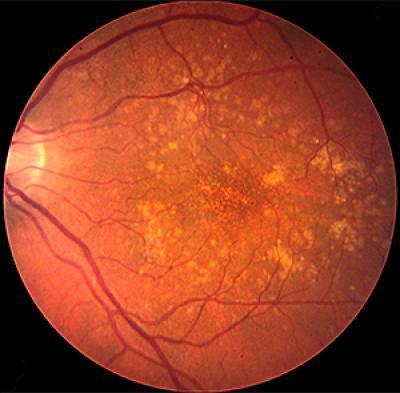Apte, the Paul A. Cibis Distinguished Professor of Ophthalmology and Visual Sciences, and his team found that macrophages, from old mice and in patients with macular degeneration, have inadequate levels of the protein, called ABCA1, which transports cholesterol out of cells. As a result, the old macrophages accumulated high levels of cholesterol and couldn't inhibit the growth of the damaging blood vessels that characterize the "wet" form of the disorder.
But when the researchers treated the macrophages with a substance that helped restore levels of ABCA1, the cells could remove cholesterol more effectively, and the development of new blood vessels was slowed.
"We were able to deliver the drug, called an LXR agonist, in eye drops," says first author Abdoulaye Sene, PhD, a post-doctoral fellow in the Apte lab. "And we found that we could reverse the macular degeneration in the eye of an old mouse. That's exciting because if we could use eye drops to deliver drugs that fight macular degeneration, we could focus therapy only on the eyes, and we likely could limit the side effects of drugs taken orally."
Sene and Apte also say that since macrophages are important in atherosclerosis and in the formation of new blood vessels around certain types of cancerous tumors, the same pathway also might provide a target for more effective therapies for those diseases.
"We have shown that we can reverse the disease cascade in mice by improving macrophage function, either with eye drops or with systemic treatments," Apte says. "Some of the therapies already being used to treat atherosclerosis target this same pathway, so we may be able to modify drugs that already are available and use them to deliver treatment to the eye."

This is video of an examination of the retina of a patient with age-related macular degeneration. The light-colored flecks are cholesterol-rich deposits that have built up under the retina.
(Photo Credit: Washington University School of Medicine)

Beneath the retina of a patient with macular degeneration, the small light dots against the orange background are cholesterol deposits, and as cholesterol builds up, the area becomes inflamed, spurring the development of abnormal blood vessels that can lead to loss of vision.
(Photo Credit: Apte Laboratory)